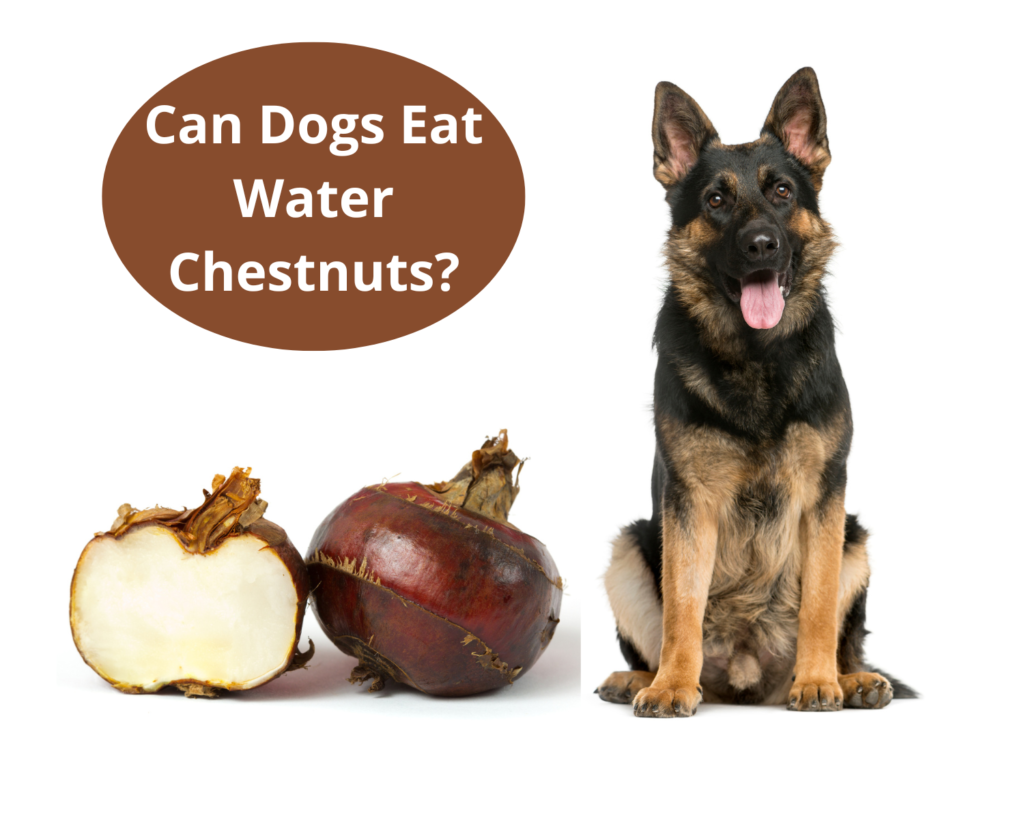Water chestnuts, common in Asian cooking, aren’t actually a nut, despite their name. Often used in stir-fries and soups, they are actually a variety of marsh grass and are sometimes even called vegetables.
For the most part, they’re a human food and are rarely ever associated with pets. But that doesn’t necessarily mean that pets can’t or shouldn’t eat them.
So, can dogs eat water chestnuts? Read on to find out!
Can Dogs Eat Water Chestnuts Safely?
Yes, dogs can eat water chestnuts. They’re likely to enjoy the texture of the food and will appreciate it as a bit of a treat. However, moderation must be practiced to avoid health-related issues, as is the case with all treats.
Nutritional Information Of Water Chestnuts
Uncooked water chestnuts weigh about 9 grams each, according to the US Department of Agriculture’s FoodData Central.
The amount of a single safe serving of water chestnuts for dogs depends on their size, but about 2 is a reasonable amount for many breeds.
As such, here is the nutritional value of one serving of two raw/uncooked water chestnuts, weighing 18 grams in total.
- Water: 13.25 g
- Energy: 17.45 kcal
- Carbohydrates by difference: 4.3 g
- Dietary fiber: 0.54 g
- Sugars: 0.865 g
- Calcium: 1.98 mg
- Magnesium: 3.96 mg
- Phosphorus: 11.35 mg
- Potassium: 105 mg
- Sodium: 2.52 mg
- Vitamin C: 0.72 mg
- Folate: 2.88 µg
- Choline: 7.5 mg
Potential Hazards To Watch For When Feeding Water Chestnuts
Water chestnuts have a high starch content that can wreak havoc on your dog’s digestive system when consumed in excess. This is why moderation is so important.
If you notice any signs of digestive discomfort, it’s best to simply not feed your dog these foods at all, for their own sake!
Whole water chestnuts can also pose a choking hazard, especially to smaller dogs. But even in bigger dogs, they can become the cause of an intestinal blockage.
It’s a rare complication, but not rare enough to be worth risking! So chop water chestnuts up before feeding them to your pooch.
There is also the very simple hazard that comes with feeding your dog any new food, especially human food. Dogs have sensitive stomachs and often need some preparation for an unusual addition to their diet.
Introducing any unusual food too quickly can cause nausea, diarrhea, vomiting, and other digestive problems.
As such, when first feeding your dog water chestnuts, start by only feeding them a tiny piece, then waiting for a day to see how their digestive system reacts.
Then, gradually increase feeding frequency until your dog is eating the ideal serving size without issue.
As a final note, you should always use fresh water chestnuts, not canned ones, to avoid the excessive salt content in canned water chestnuts.
Using canned water chestnuts can lead to sodium overdose and toxicity that dehydrates your dog to a severe level that can be fatal.
You should also always remove the skin from water chestnuts, as the skin poses a significant choking hazard despite not technically being nutritionally dangerous.
Benefits Of Feeding Your Dog Water Chestnuts
Water chestnuts have a lot of fiber and starch, which is of course bad in excess. But when given in moderation, it’s a great way to help prevent constipation and keep your pup well hydrated.
The low calorie and fat content of water chestnuts also mean that they’re a suitable treat for a dog.
They have a lot of carbohydrates so they’ll feel satisfying and filling to a dog even in the small recommended serving, despite the lack of total calories.
There’s also a decent amount of minerals and vitamins in water chestnuts, though the recommended serving you’ll be feeding will have minimal amounts of them. Still, as a complement to a dog’s larger diet, it’s a nice way to get some of those nutrients in there!
The main benefit of feeding water chestnuts to a dog comes in the form of providing your dog a novel treat by adding variety to its diet. Think of it as more of a bit of a snack for your dog’s enjoyment than a nutrient-packed food.
Best Ways To Feed Water Chestnuts And How Much Of It Can A Dog Safely Have
The most common safe way to feed water chestnuts is by boiling them plain, removing the skin, and feeding them either in slices or crushed.
Dogs enjoy the texture and crunchiness and don’t mind biting into chunks of chestnut if they’re big enough to do so.
You can also opt to feed raw water chestnuts to your pup. Just remove the skin and give it to them in slices or crushed so they can enjoy the crunch as a treat.
If your dog has a sensitive stomach or if you’re worried about its health, you’ll likely want to cook the chestnuts first anyway, as this is safer for the digestive system.
You can also crush up water chestnuts, cooked or raw but without skin, and add them to your dog’s usual food. They can be mixed in thoroughly with normal meals or added as a topping to make food more enticing.
Regardless of your preferred serving method, remember to always remove water chestnut skin to avoid choking and to never use canned water chestnuts. You should also never add spices or other flavorings to them.
Water chestnuts should be a very occasional treat and shouldn’t be a regular part of a dog’s diet. It’s a good idea to only give them to your dog once every two weeks at most.
A large dog breed can have two or three water chestnuts, a medium breed can have one or two, and a small breed should only consume one.
Conclusion
Dogs can eat a very small amount of water chestnuts every couple of weeks. Many of them will thoroughly enjoy the crunch and texture!
Just be sure to feed them this in moderation only and take all precautions necessary beforehand.

